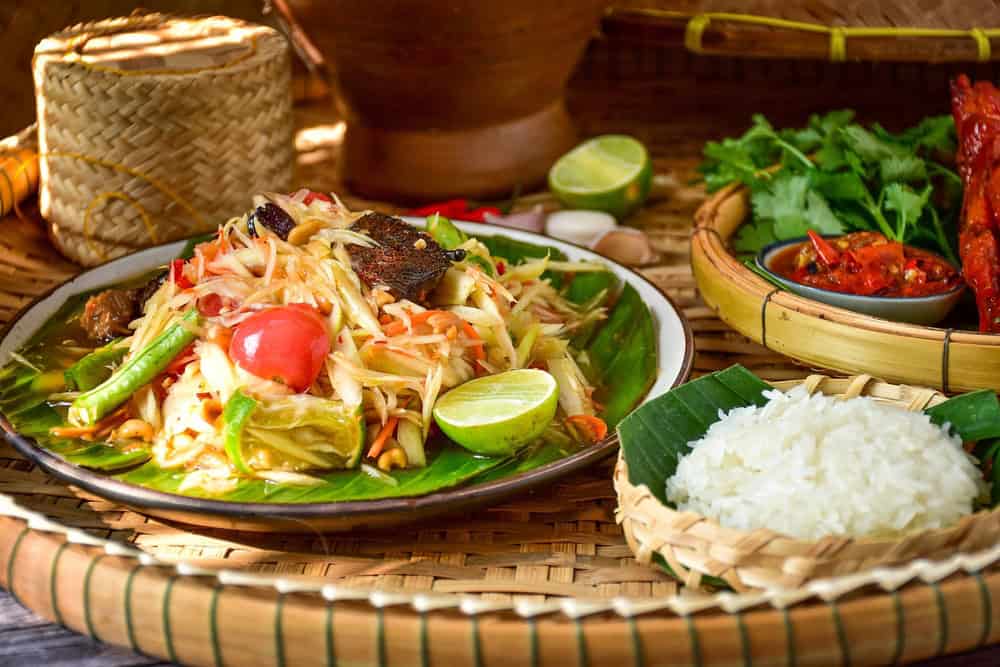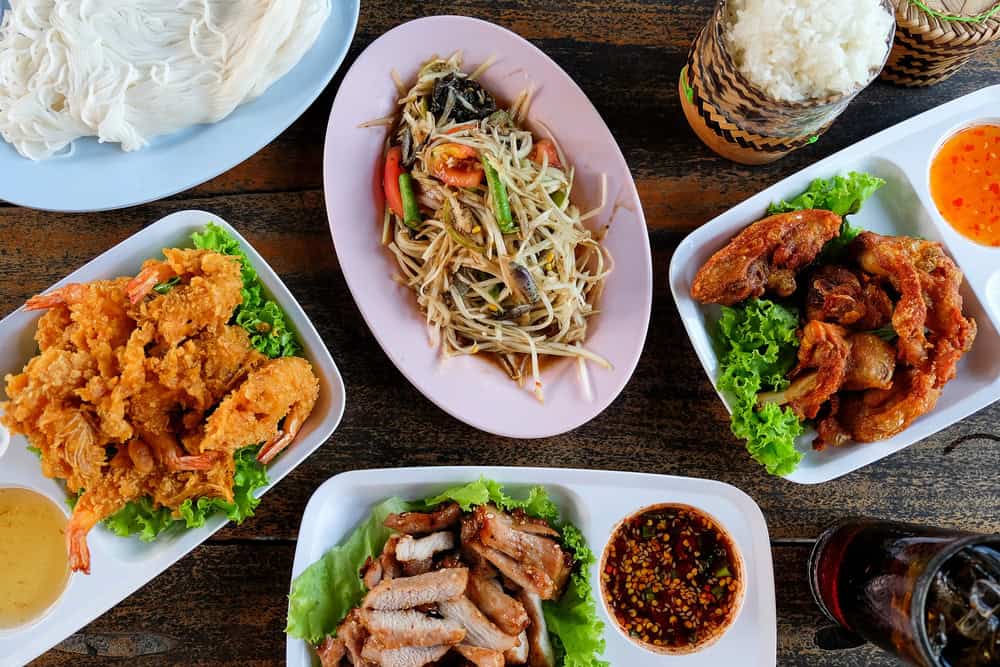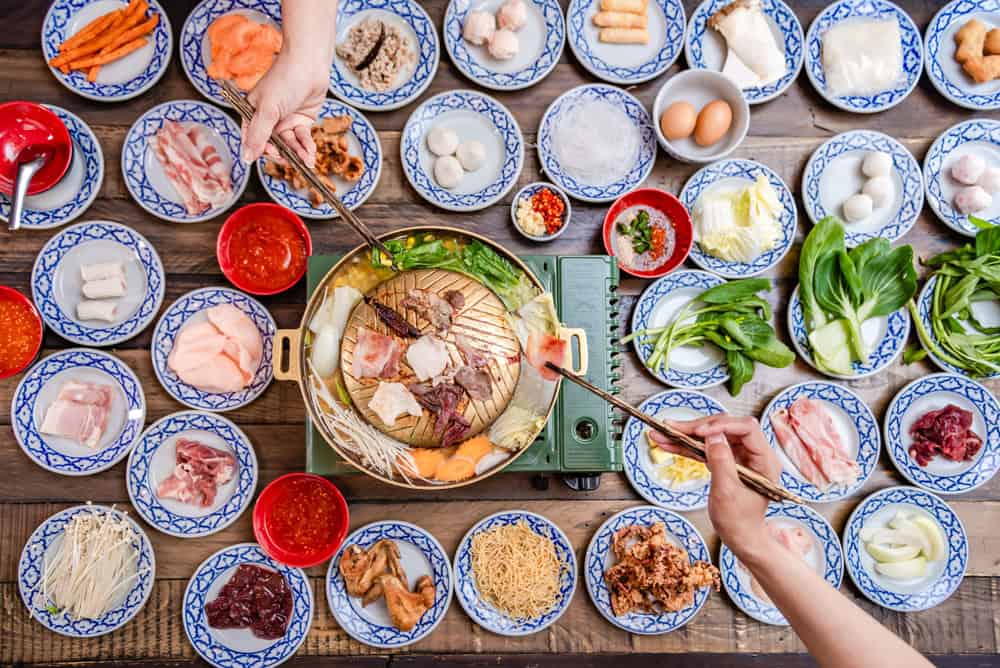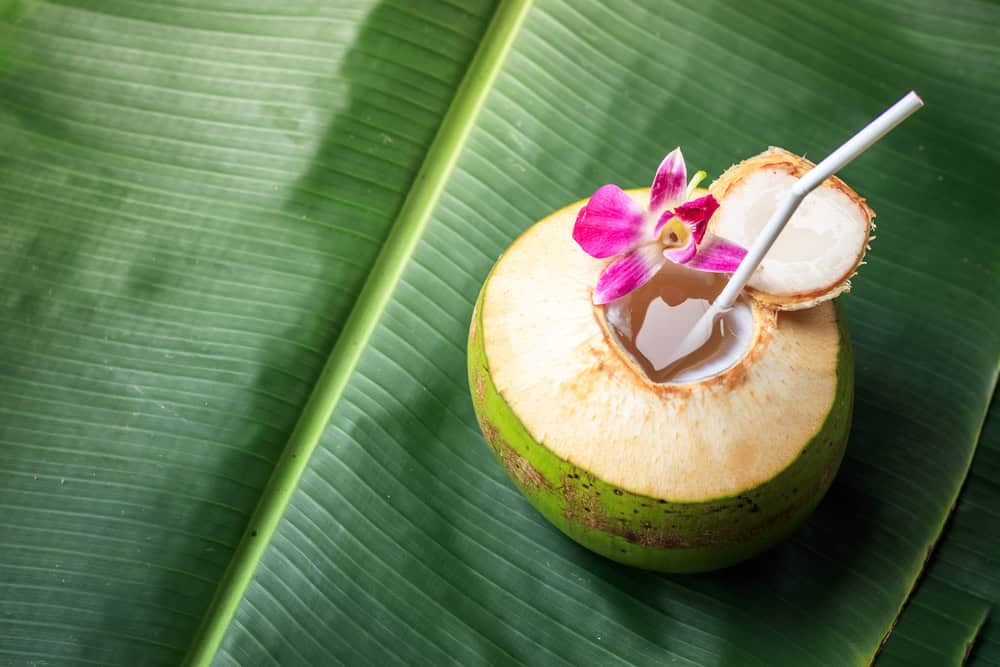
Thai food has earned its acclaim due to its diverse array of flavors, ranging from spicy to sour, sweet, bitter, and umami, all complemented by fresh herbs, vibrant vegetables, and lean proteins. However, beyond the appetising flavours, nutritionists identify Thai food as a prime example of healthy eating practices that people can learn something from.
Here are seven healthy eating practices of Thai food culture, according to nutritionists, and ways you can incorporate them into your meals.
Mamta Sharma (MSC in Clinical Nutrition and Dietetics) Nutritionist, says Thai cuisine exemplifies the ideal combination of taste and health. Thai meals are typically shared and feature an abundance of fresh herbs, vegetables, and spices, providing not only a flavorful dining experience but also essential nutrients that support overall well-being.
1. Use Fresh Herbs, Spices & Vegetables Frequently

One common practice in Thai food culture is the extensive use of fresh herbs and vegetables, including lemongrass, galangal, Thai basil, kaffir lime leaves, coriander, mint, chillies, and garlic. Unlike simply adding flavour, fresh herbs and spices contain antioxidants, anti-inflammatory compounds, immune-boosting properties, and digestive benefits.
Nutritionists recommend including herbs and vegetables in most meals, not as a garnish, but as part of the main ingredients—like a papaya salad (Som Tum) with shredded unripe green papaya, chilis, garlic, and lime, or mixed stir-fried vegetables with little if any oil to keep the vegetables fresh in colour and flavour while you eat. Then, in keeping with traditional Thai cuisine, use plenty of fresh herbs.
Our nutritionist suggests a simple yet effective way to make your meals both tastier and healthier — adding a pinch of black pepper and a few drops of lemon to your soups or salads not only enhances the flavour but also boosts their nutritional value.
2. Choose lean protein sources & seafood

Lean meat (chicken, lean pork), seafood (fish, shrimp), tofu, and legumes are usually better options than red and processed meat in Thai dishes. Lean protein options are often lower in saturated fat and high in beneficial fats, too – especially in the case of seafood, meat, and proteins. Additionally, these often contain a sufficient amount of essential amino acids. Protein plays a role in being fuller for longer, repairing muscle, and stabilizing blood sugar. (For example, “Tom Yum Goong” (spicy shrimp soup) and other steamed fish dishes are a good option and are extremely filling)
3. Choose modified cooking methods: Grill, steam, quick stir fry

Most prior recipes have included some form of deep frying, while traditional Thai cooking emphasizes grilling, steaming, poaching, and quick stir-fry methods of cooking. This allows cooking with higher-quality fats, as well as food that is better preserved nutritionally, with less added fat. Consider steaming fish with herbs and lime, or grilling meat with a light marination & enjoy sprinkled with lime or chili, will surely be satisfying and tasty, but with fewer fats than frying entire fish, etc. There is a significant difference between various frying methods, which may be impossible to typify. “Quick frying” methods are generally frying on high heat very quickly, with less oil, in less time, so as to protect color, texture, vitamins, and flavor.
4. Achieve Macronutrient Balance: Carbohydrates, Protein, & Fats

A key habit that nutritionists identify in healthy Thai foods is balance: A combination of carbohydrates (typically with rice or noodles), protein, and healthy fats (like coconut milk, nuts, seeds, or oil), along with an abundance of vegetables.
For example, a well-balanced plate would include a curry with lean chicken or tofu, coconut milk, spices, and various vegetables on top of a ½ or smaller serving of rice. Or a plate of grilled shrimp, a mixed vegetable stir fry, and a side of brown or minimally processed rice.
5. Moderate Added Sugar, Salt, & Sauces

Although Thai food is known for bold flavors, many nutritionists caution about hidden sugar and salt – especially in Westernized or restaurant Thai meals. Sauces, salad dressings, curry pastes, and pre-done condiments sometimes hide heavy doses of sugar, sodium, or processed oils.
A helpful habit: ask for less sugar and use less salt while dining out or cooking in your own kitchen. Use natural sweeteners like palm sugar and coconut sugar judiciously or just reduce the amount. Also, manage portion control by placing sauces or dressings at the side of the plate instead of on top.
6. Mindful Portions & Eating Together

Thai people generally enjoy eating family-style and sharing several dishes. Many smaller dishes encourage diversity, create a slower enjoyment of food, and also avoid overeating.
Nutritionists say this is a good habit to get into: share meals, take breaks between bites, take in flavors more slowly, and stop when content and not stuffed. When serving sizes are large, it can help to use smaller plates or to pre-package portions.
7. Hydrate & Natural Liquids with Less Added Sweetness

Hydration and beverages play a role in healthy eating. Many Thai meals include broths, soups, herbal teas or lime water, or coconut water. These can all be hydrating and can help avoid increased sugar consumption.
Instead of sweet drinks, try sipping water with slices of lime, herbal infusions, or coconut water that has been derived from the coconut with no added sugar. When desserts are eaten, try incorporating fresh fruit or a smaller portion instead of something sweet with added sugar.
Advantages You May Notice
Adopting even just some of these habits rooted in Thai dining principles could provide potential benefits, like:
-Improved digestion (due to fiber, fresh herbs, and less aggressive cooking techniques).
-More consistent energy and blood sugar levels because of balanced macronutrients.
-Less risk of inflammation and cardiovascular disease through better fats, lower saturated fat content, and decreased total sodium and sugar.
-When the size of portions is sensible and meals feel filling, weight management becomes more intuitive.
-Increased consumption of antioxidants, vitamins, and immune-supporting properties.
Final Takeaway
Thai cuisine is more than just unique flavor combinations. It also offers lessons about healthy eating, backed by time-tested practices, as well as a sprinkling of loved methodology coming from nutrition science, which are surprisingly pragmatic to follow. Using these habits of including fresh herbs, lean proteins, cooking techniques such as grilling and steaming, mindful portioning, moderated sugar and salt intakes, and hydrating, natural liquids will transform your meals to be nourishing. Even if you can sprinkle in one or two of these habits this week, you and your taste buds will appreciate the benefits.
FAQs
-Why is Thai cuisine considered one of the healthiest diets in the world?
Traditional Thai dishes center around balance, using lots of fresh herbs, lean protein, vegetables, and cooking methods that don’t rely heavily on deep frying (such as steaming or grilling). This discourages the use of processed ingredients and promotes heart health and gut health.
-If I want to replicate these healthy dishes at home, what can I do to make them a little healthier?
Consider using less oil and sugar, using brown rice rather than white rice, using more herbs (like basil or lemongrass), and choosing grilled or steamed items as opposed to fried.
-What are some of the top Thai foods that nutritionists recommend?
Common recommendations include foods such as Tom Yum soup, Som Tum (green papaya salad), grilled fish or other seafood, and stir-fry made with vegetables and tofu. All of these options are high in fiber, protein, and antioxidants.
-Is Thai food healthy for someone who is trying to lose weight?
Yes, Thai meals are portion-controlled, contain lots of fiber and lean protein, and often include spice or chilies (particularly) to help keep you full and may even help increase metabolism and remind you or keep you mindful of calorie consumption.
-How can I change Thai cooking techniques to promote digestion?
Consider using herbs like ginger, lemongrass, and galangal, eat more fiber-rich vegetables, consume soups or broths, and try to incorporate all of these when making a recipe for anything. All are great ways to promote good digestion and decrease bloating.
(The article is written by Deepa Sarkar, Medical Writer, and reviewed by Monalisa Deka, Senior Health Content Editor)
Recommended Reads
The Mexican Way of Eating: Flavorful and Surprisingly Healthy
6 Best Japanese Foods for a Happier Gut